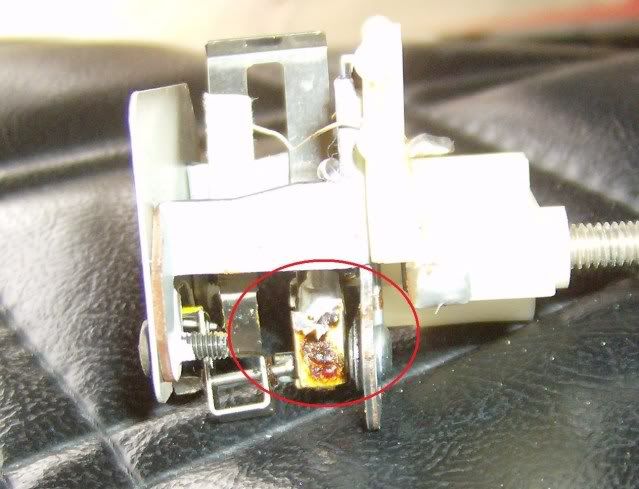Since I apparently cannot remember anything once I see something shiny
I took some pictures of the XS1100 Standard fuel gauge components and
labeled everything.
for information and troubleshooting, the flow of current in the circuit is:
A Brown wire carries 12 volt system voltage from the 20 amp Signal fuse
up to the 7 volt regulator in the tachometer housing.
The 7 volt regulator connects to the fuel gauge Positive terminal with a Red/Black wire.
Current flows through a precision resistor wire wrapped around a bi-metallic arm
in the fuel gauge, then continues out from the Negative terminal on the Green
wire that runs down to the 2-pole connector for the in-tank fuel level sending
unit.
The in-tank fuel level sending unit is grounded at the tank and through
the Black wire in the 2-pole connector.
The fuel gauge and the in-tank fuel level sending unit are both fully adjustable.
XS1100 Standard Tachometer and Fuel Gauge Wiring Inside Tachometer Housing

Broken XS1100 Standard Fuel Gauge





XS1100 In-tank fuel level sending unit

XS1100 In-tank fuel level sending unit with broken resistor wire

I took some pictures of the XS1100 Standard fuel gauge components and
labeled everything.
for information and troubleshooting, the flow of current in the circuit is:
A Brown wire carries 12 volt system voltage from the 20 amp Signal fuse
up to the 7 volt regulator in the tachometer housing.
The 7 volt regulator connects to the fuel gauge Positive terminal with a Red/Black wire.
Current flows through a precision resistor wire wrapped around a bi-metallic arm
in the fuel gauge, then continues out from the Negative terminal on the Green
wire that runs down to the 2-pole connector for the in-tank fuel level sending
unit.
The in-tank fuel level sending unit is grounded at the tank and through
the Black wire in the 2-pole connector.
The fuel gauge and the in-tank fuel level sending unit are both fully adjustable.
XS1100 Standard Tachometer and Fuel Gauge Wiring Inside Tachometer Housing

Broken XS1100 Standard Fuel Gauge





XS1100 In-tank fuel level sending unit

XS1100 In-tank fuel level sending unit with broken resistor wire








Comment